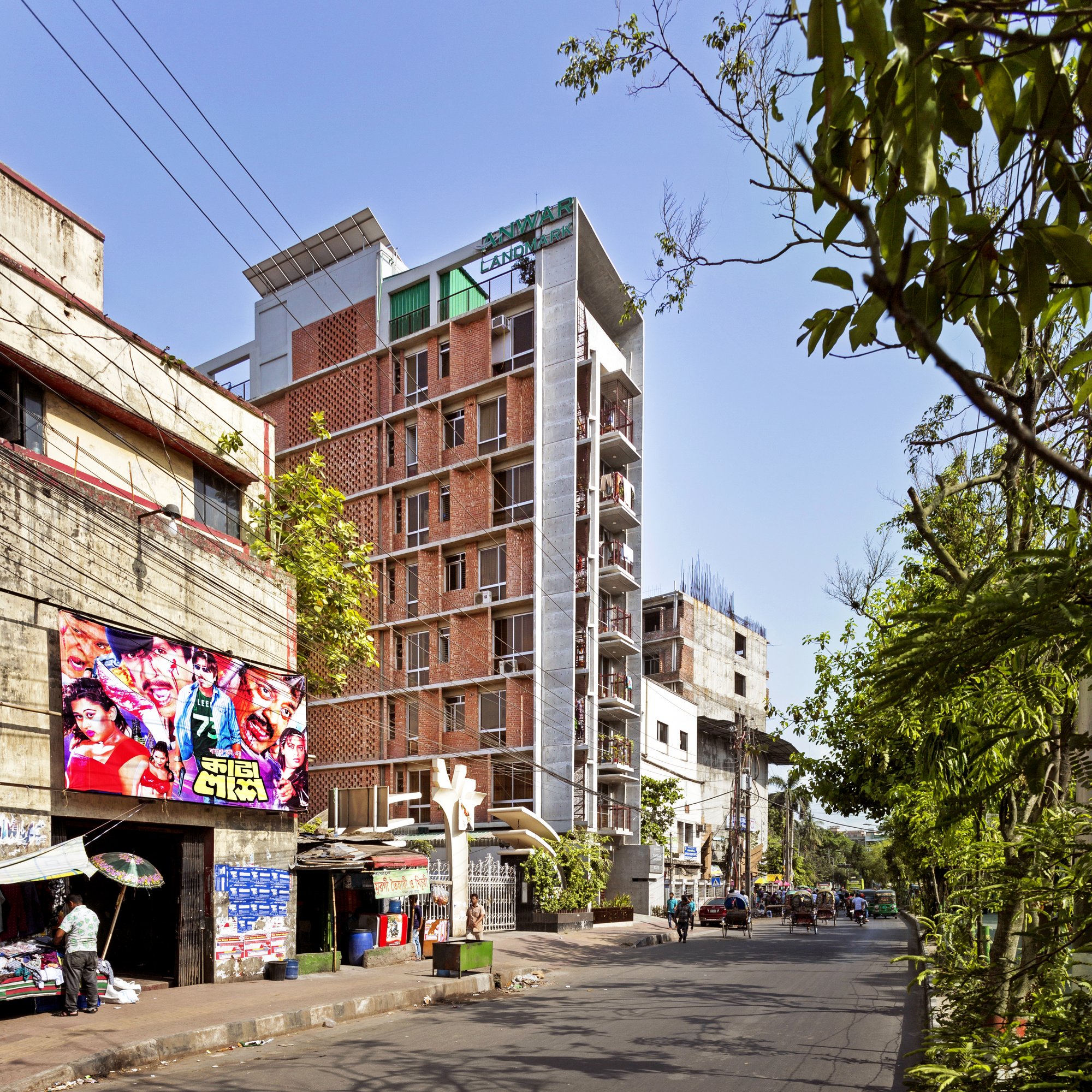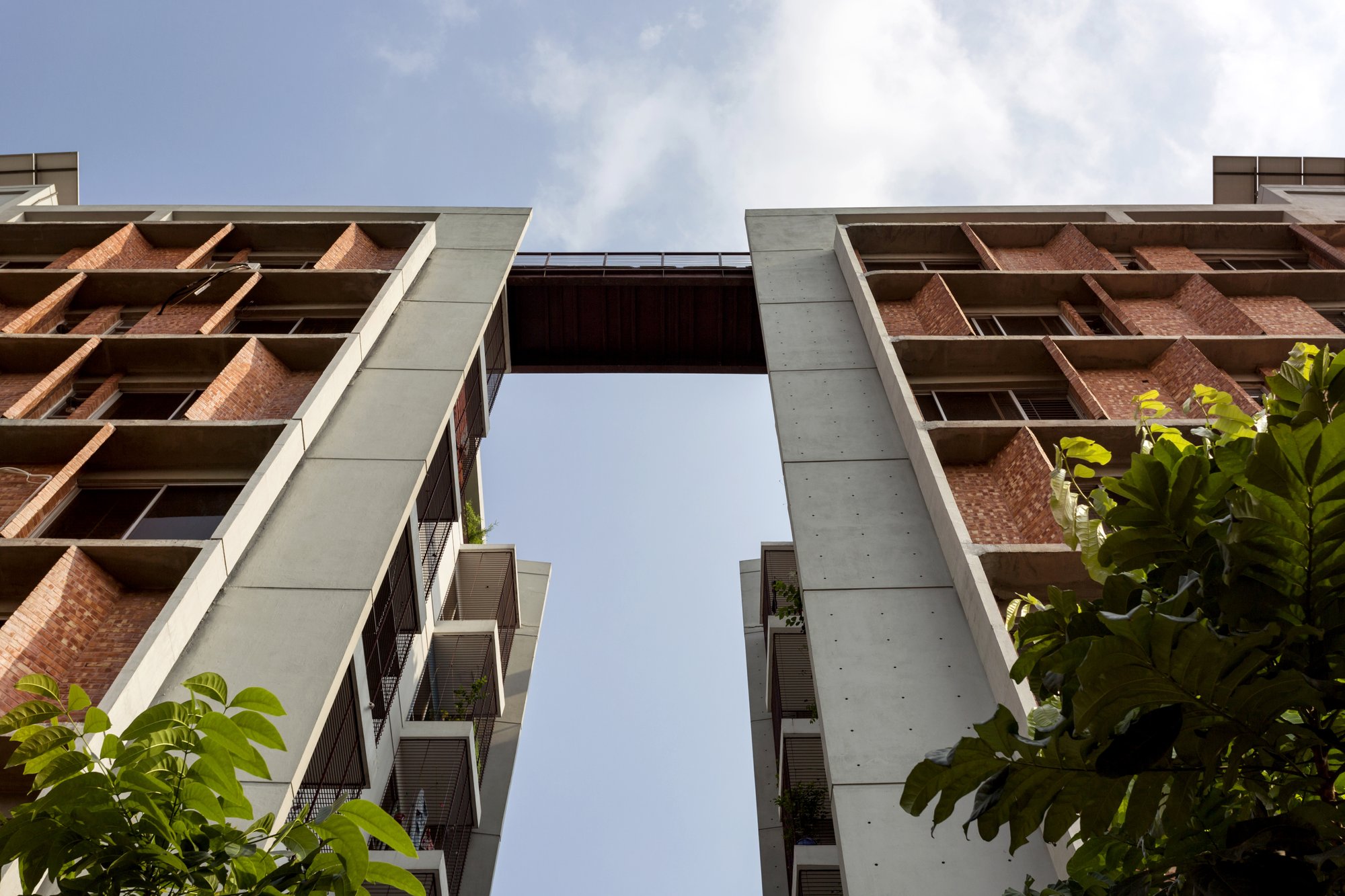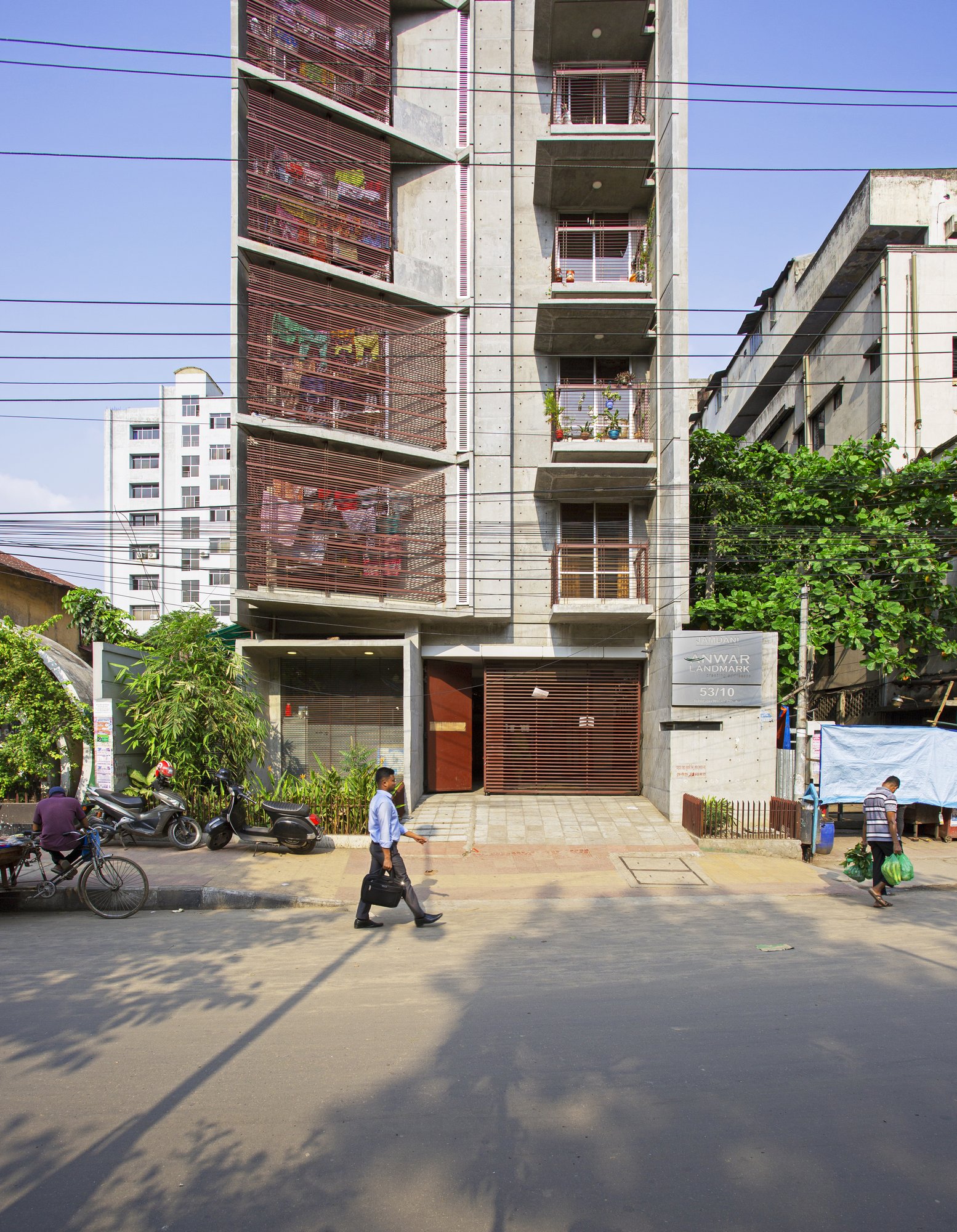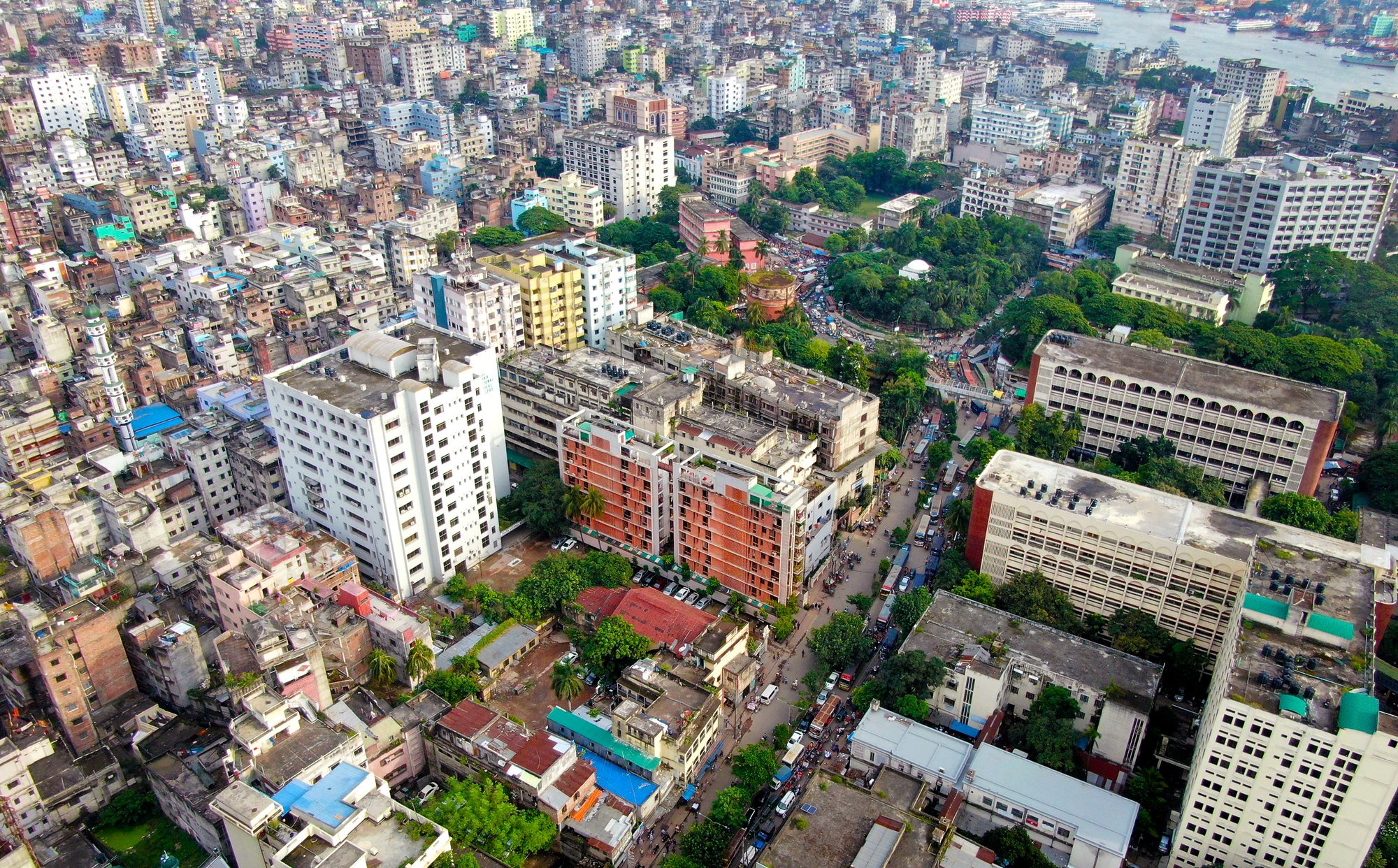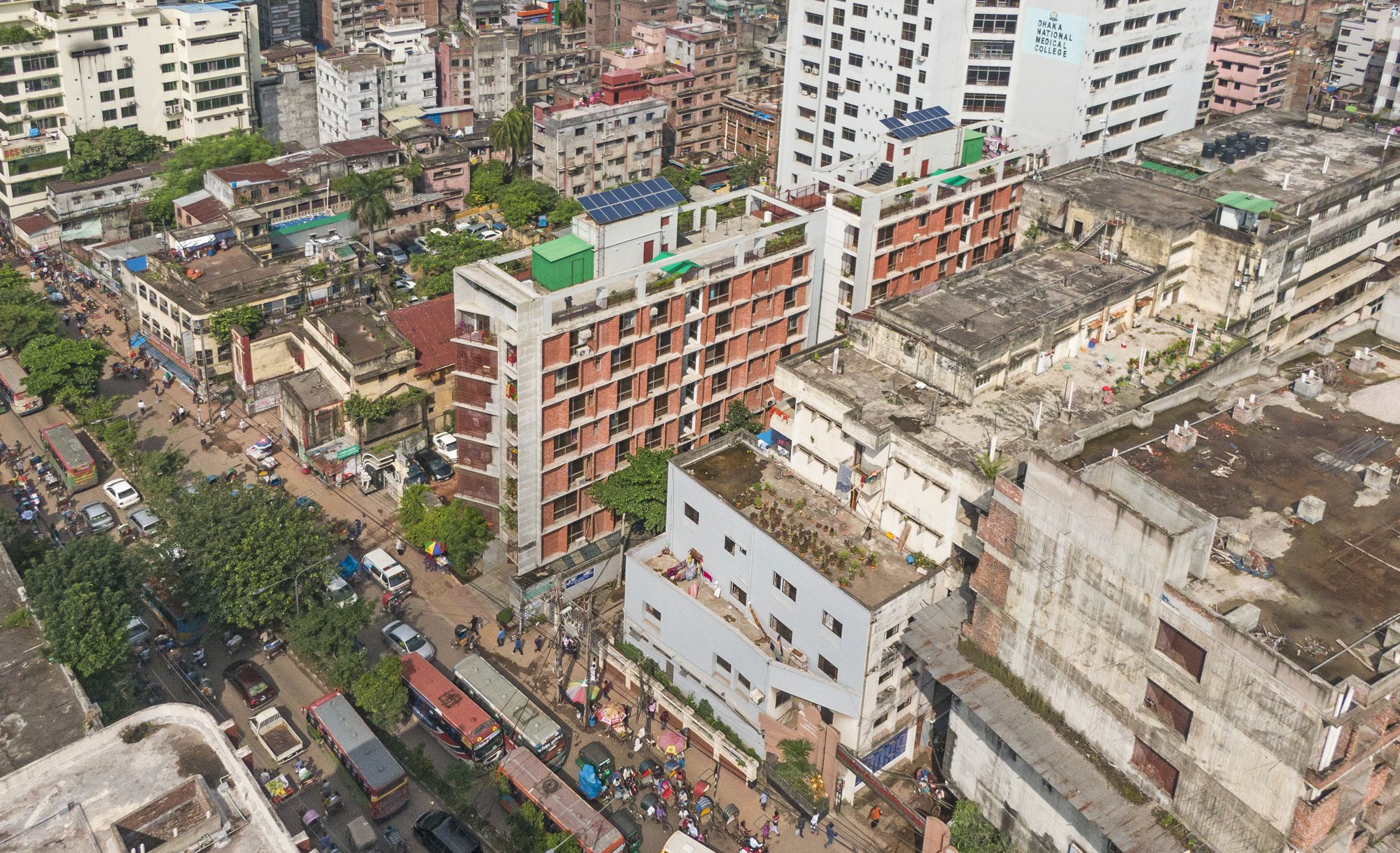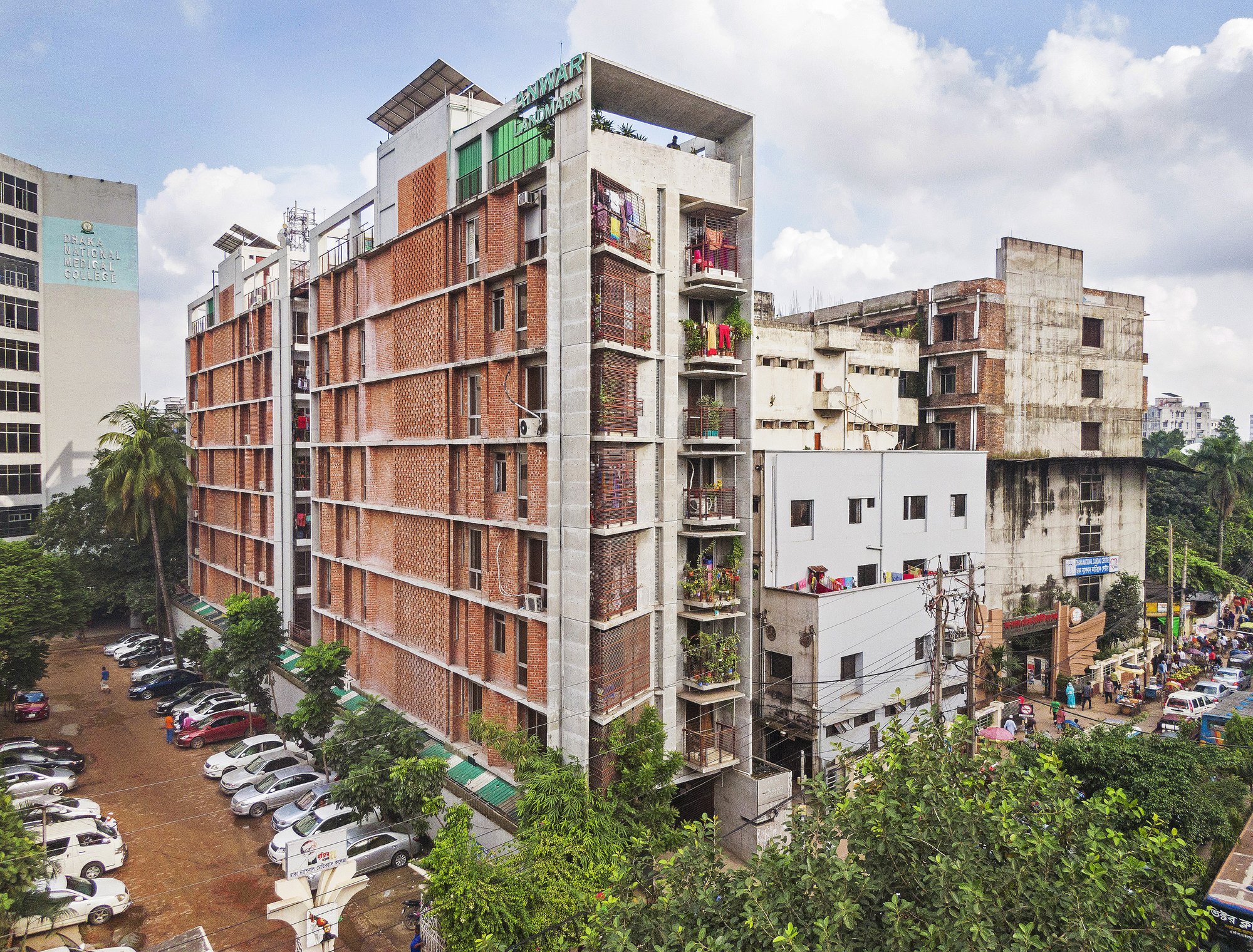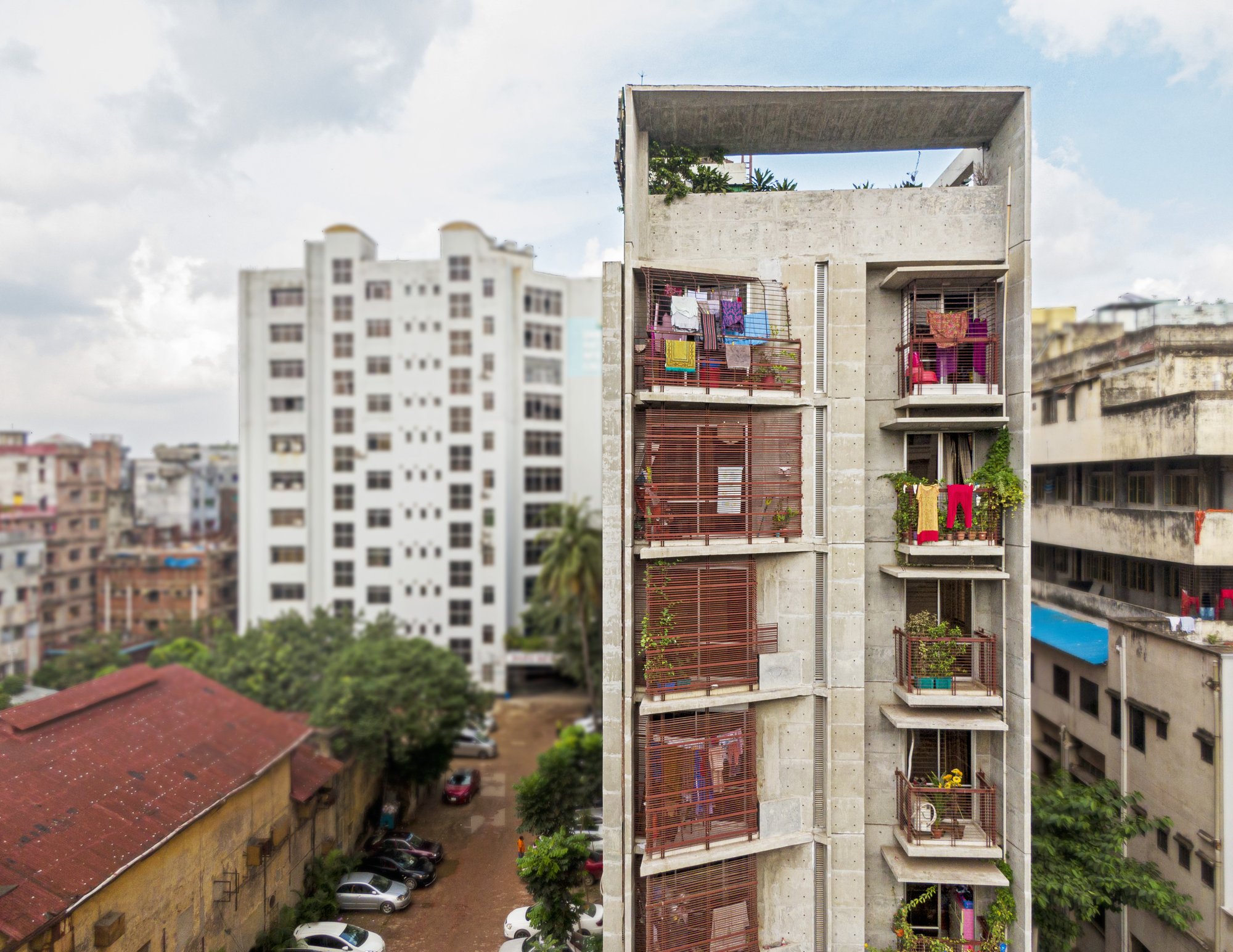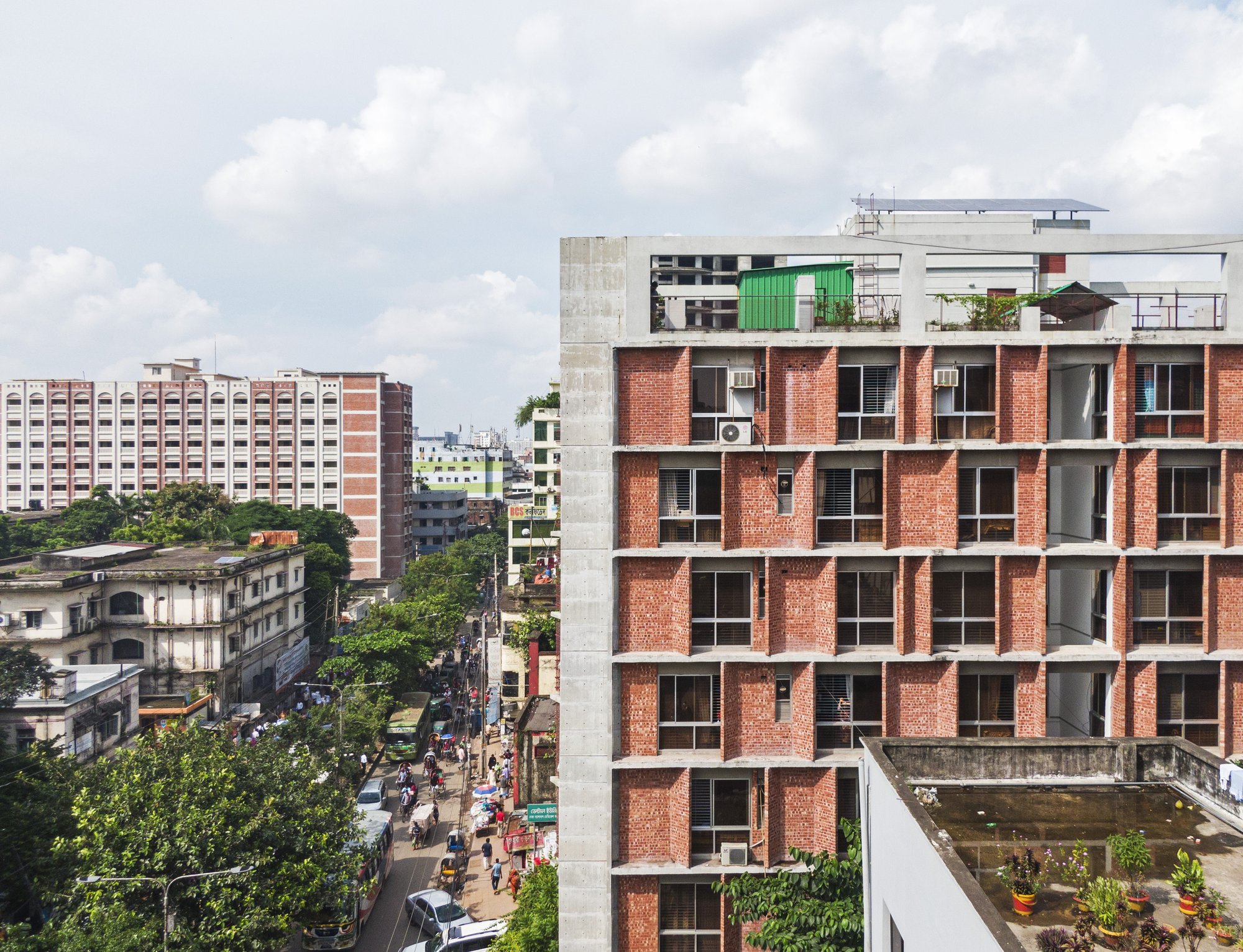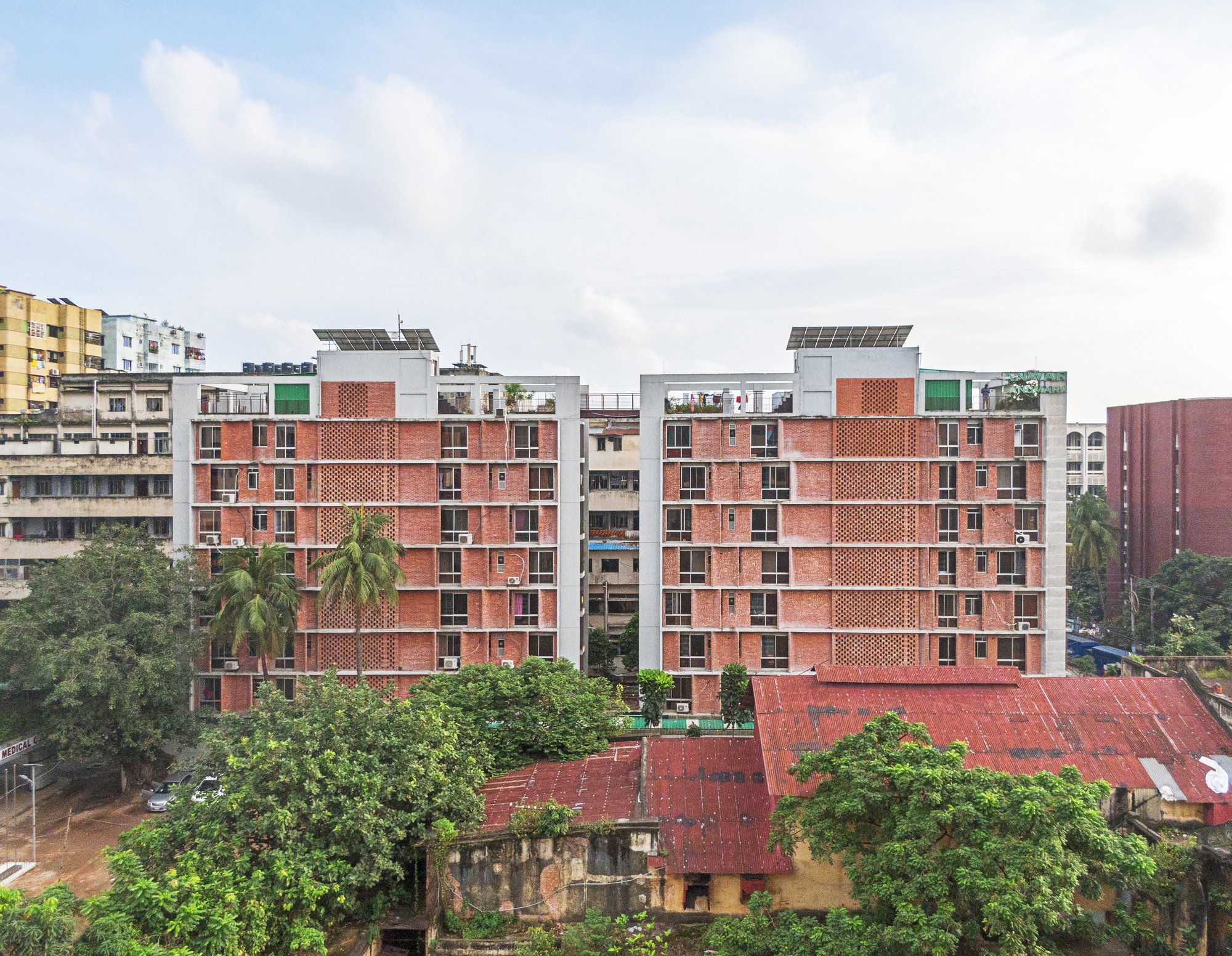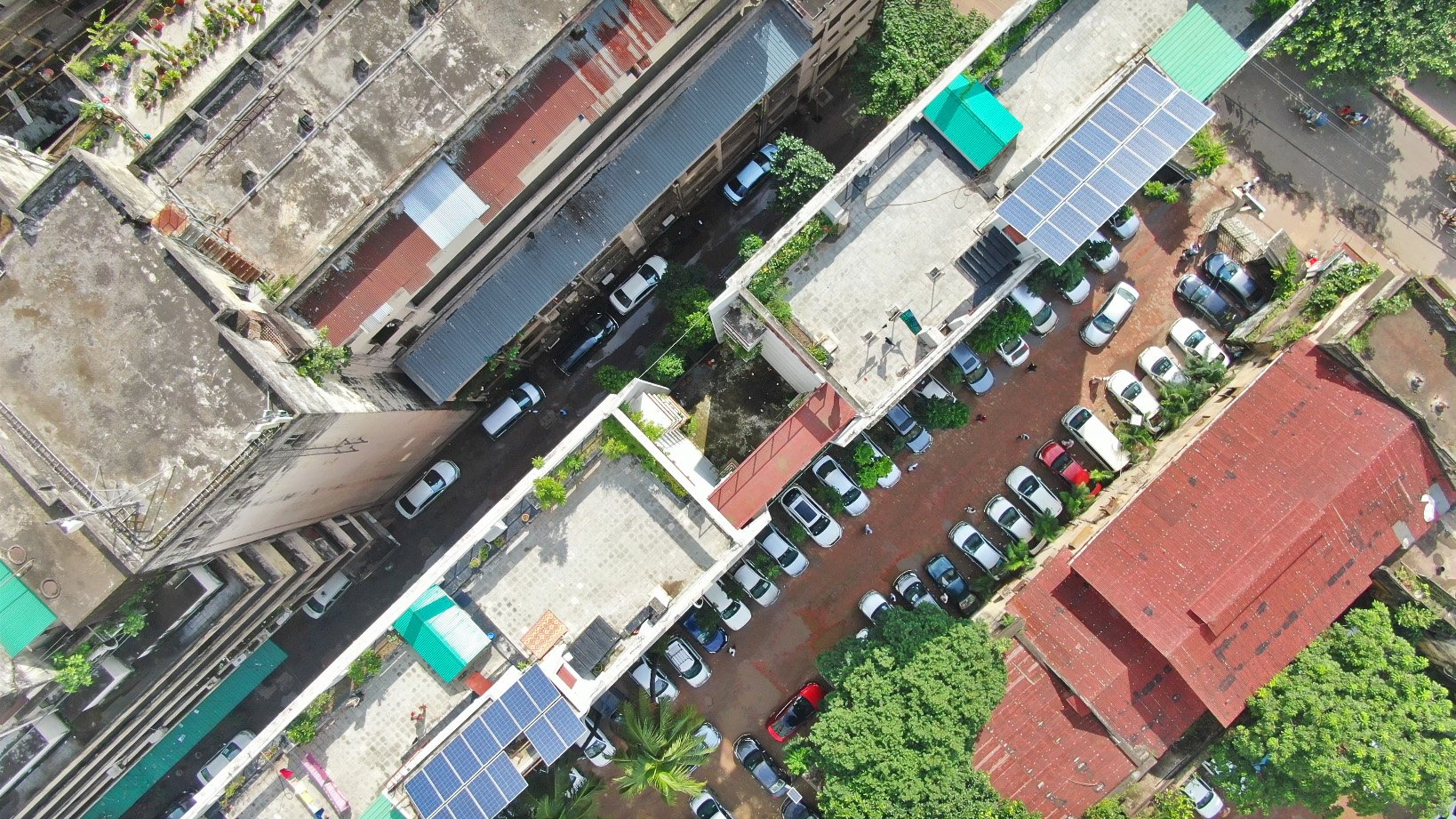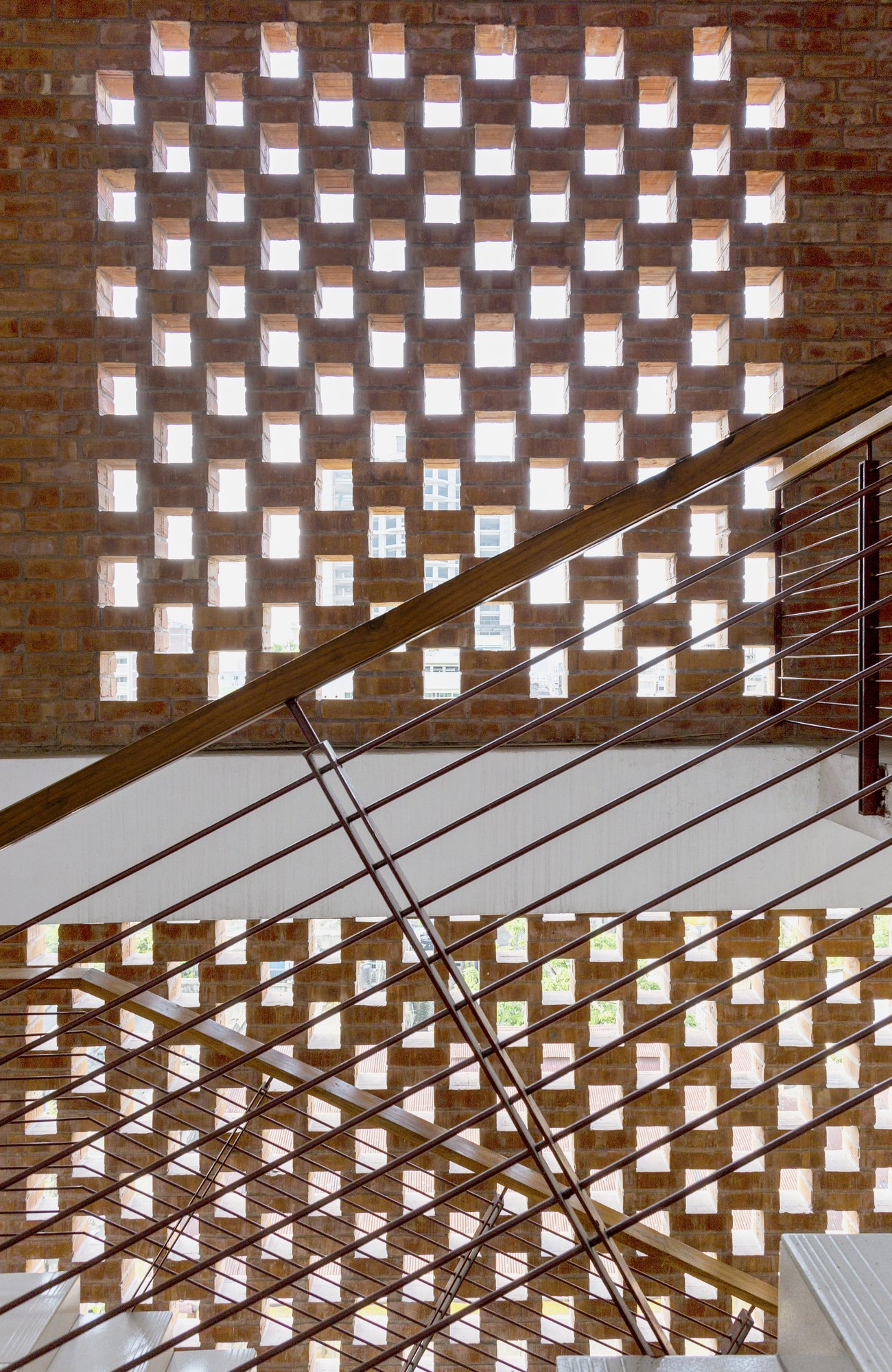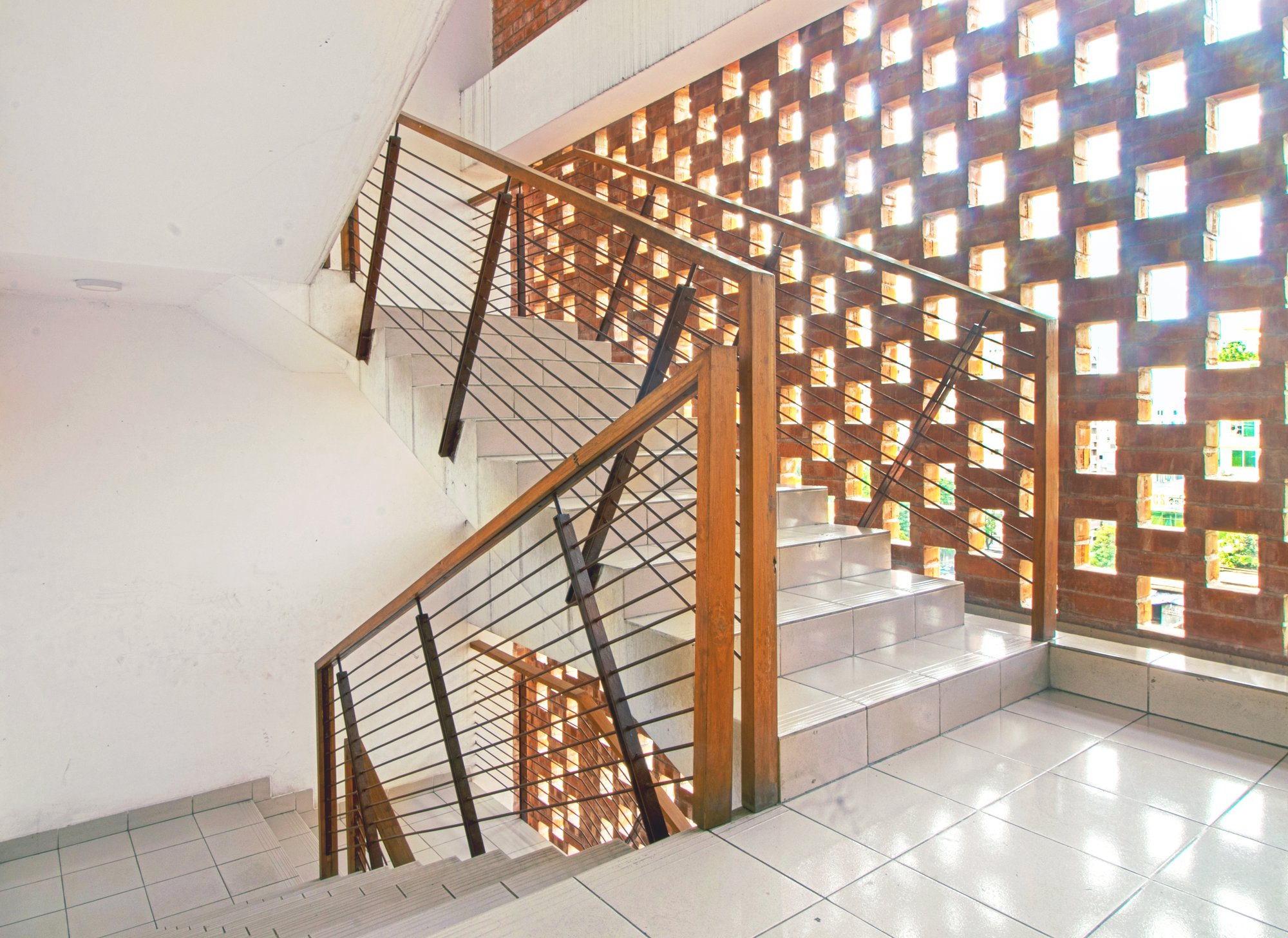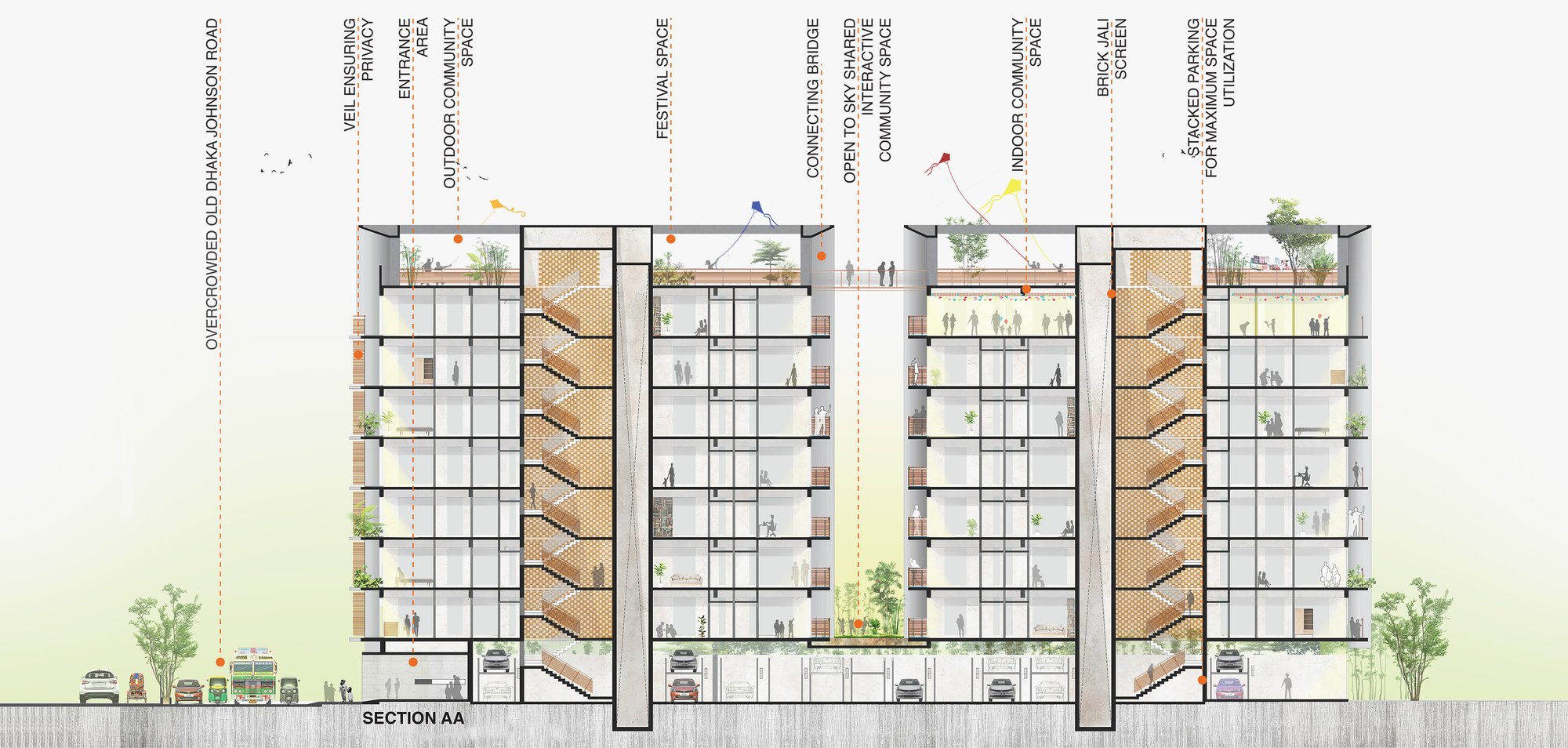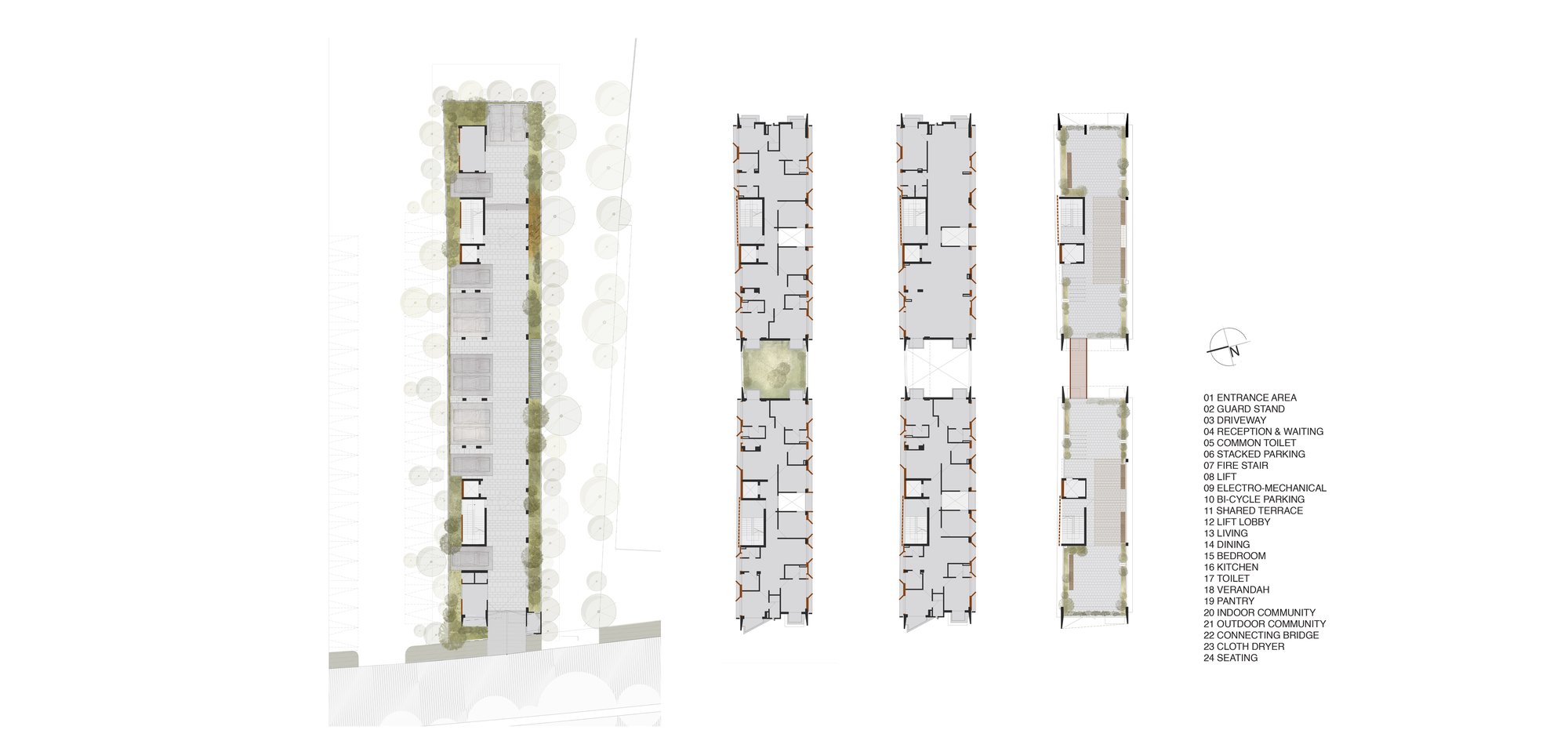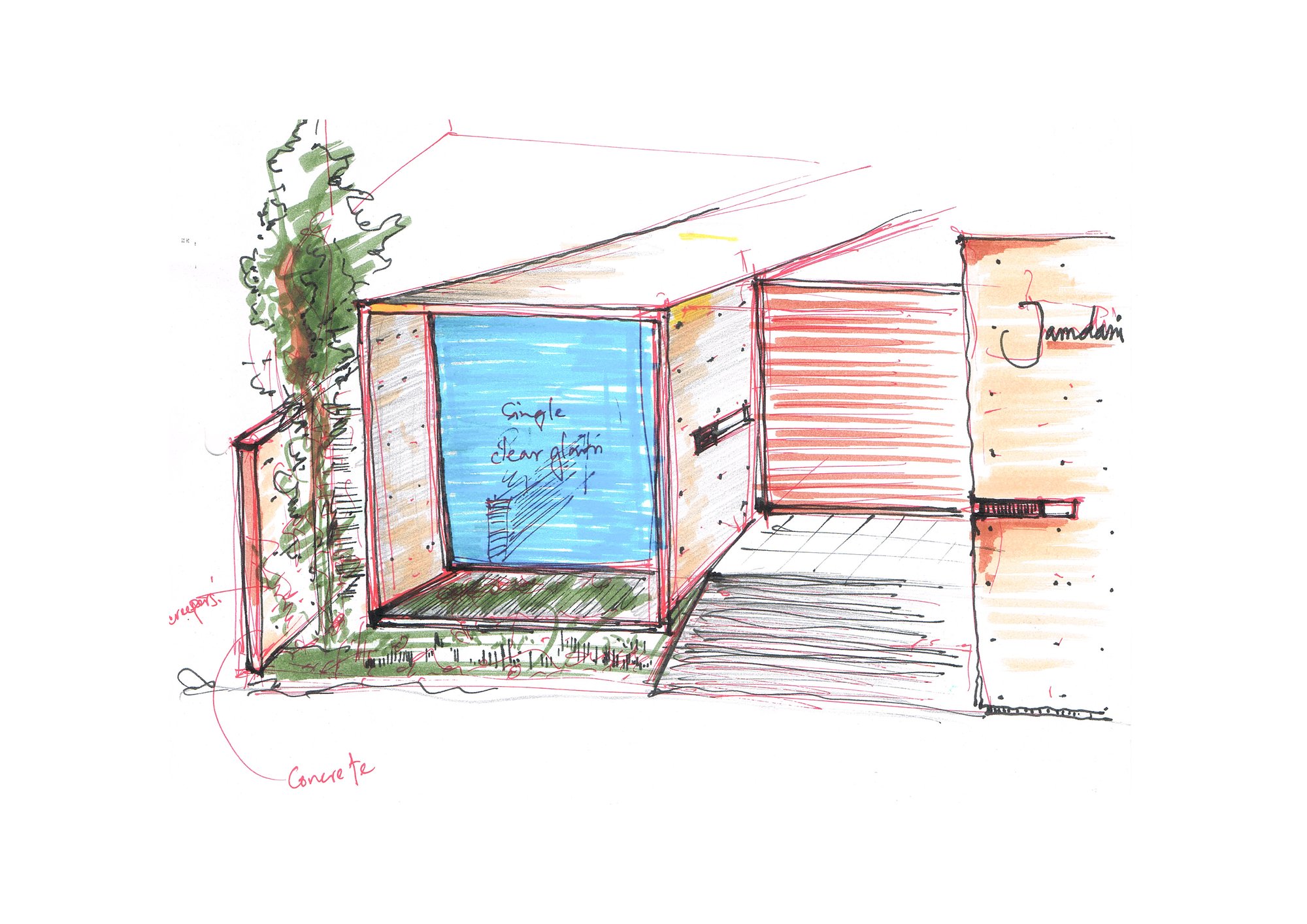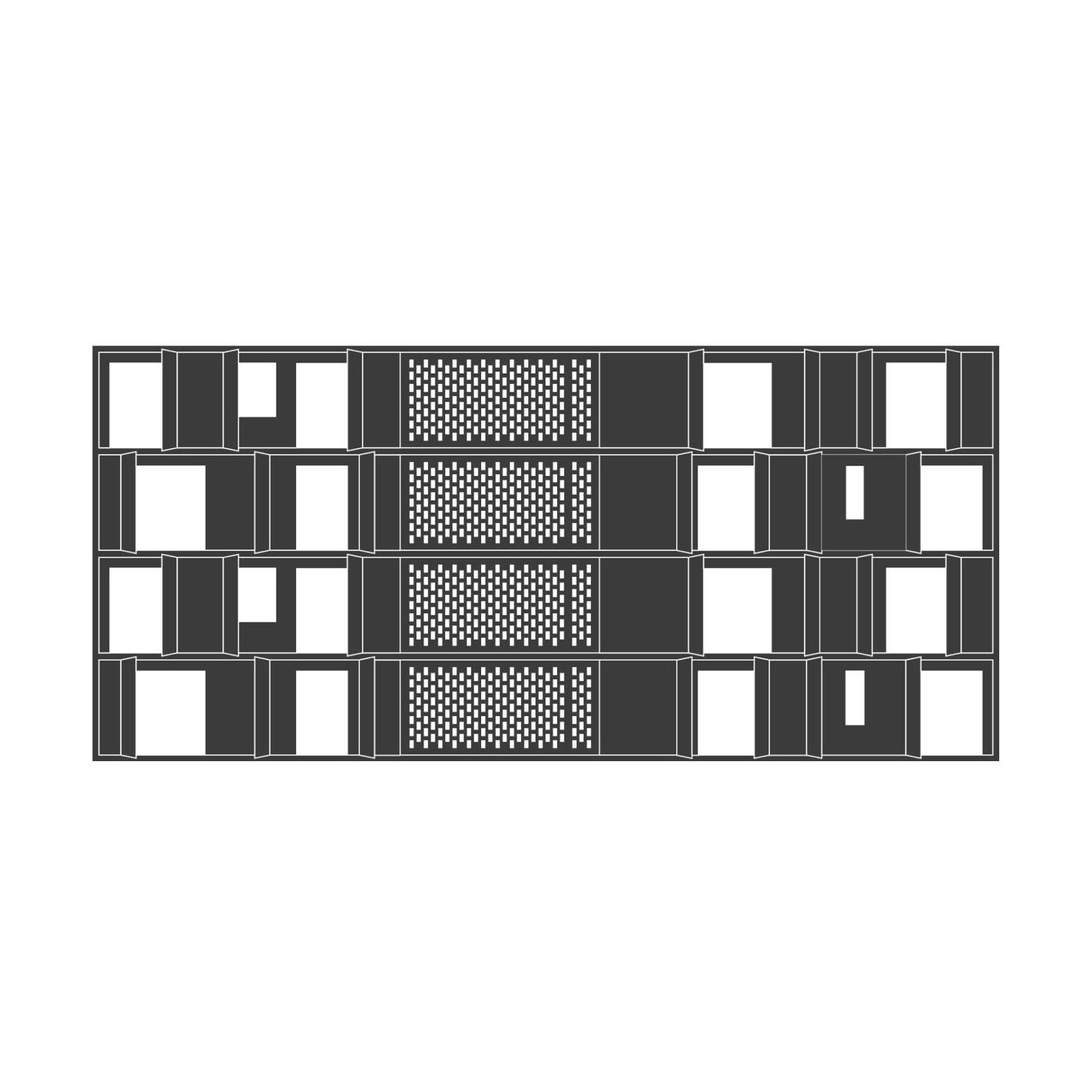
JAMDANI : MULTIFAMILY RESIDENCES AT OLD TOWN
Location : Johnson Road, Old Dhaka
Land Area : 697.6 sqm
Client : Anwar Landmark
Photography : Maruf Raihan, Noufel Sharif Sojol, Four Corners

The project is located in the old part of Dhaka city in Johnson Road, a very significant witness of the history of 400 years old city, Dhaka. Old Dhaka is one of world’s most densely populated area where living standard is a growing concern.
Johnson road witnessed many historical events as it was connected with Sadar-ghat, Old Judge court, historical Bahadur Shah park, Azad Cinema hall, National Medical College & hospital, Kazi Nazrul College, Jagannath University, these are the major site surroundings forces of the neighborhood. This neighborhood is dense and the road is crowded the entire day.
A residential development in such an area with historical references and so many active site forces of the dense neighborhood was the key to be solved. The challenge was to find an architectural statement that is inspired from the references engaged and would show a path for the development to come.
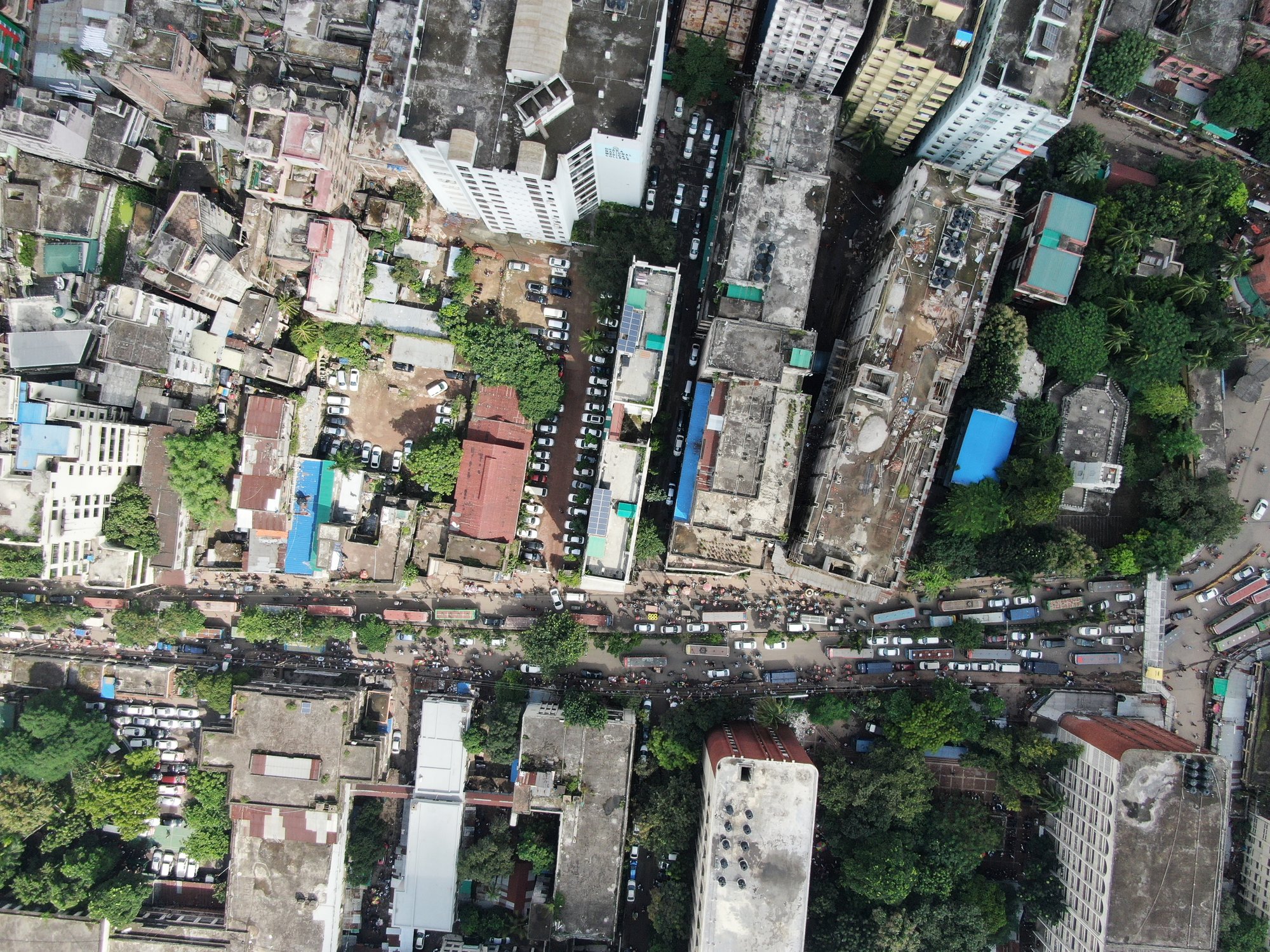
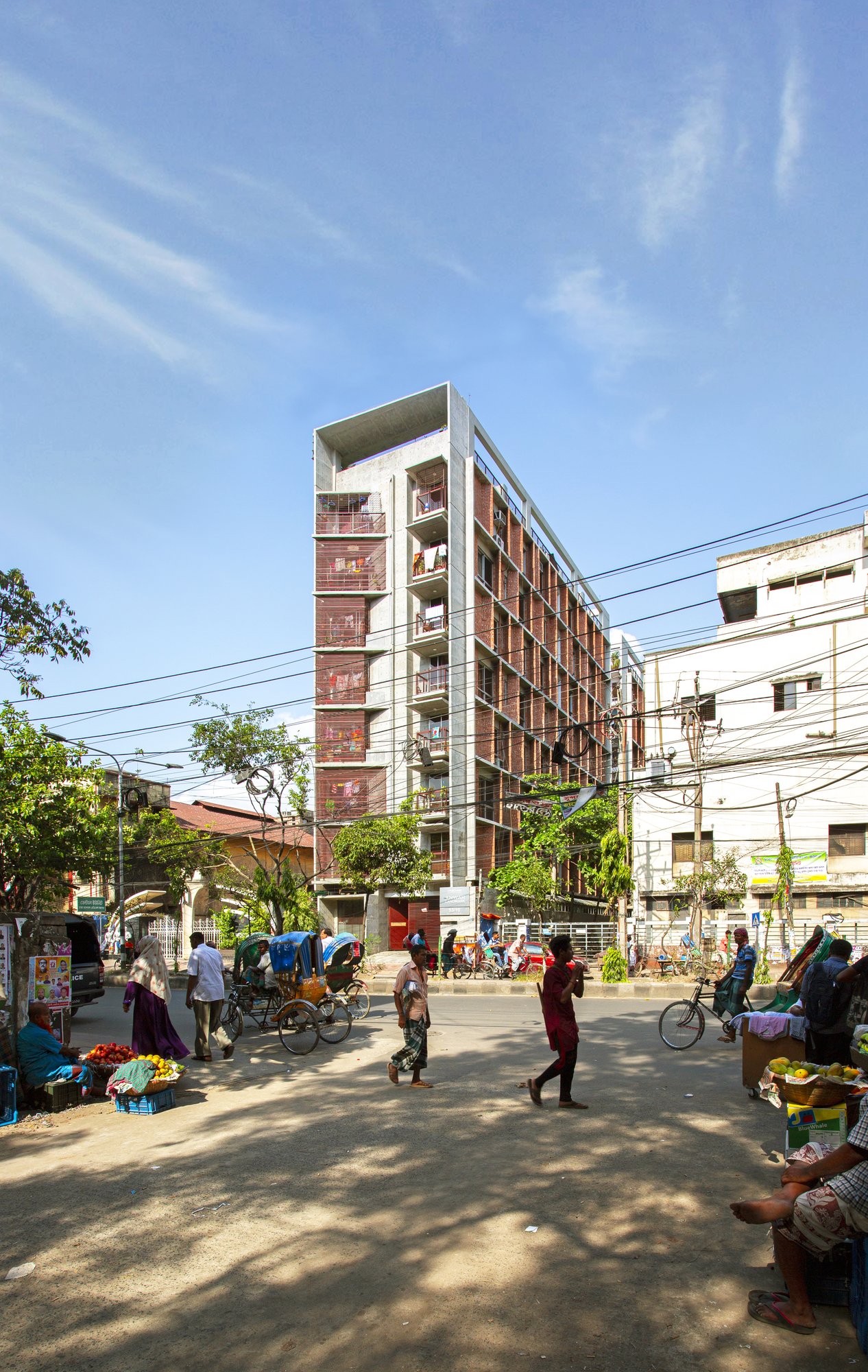
Before the project Jamdani was erected there was a residence called “Jamdani House”, connected with the century old history of delicate “Dhakai Jamdani” production and business. The intention was to create an affordable address for 26 families where the family member of the old Jamdani house will also reside in harmony with the new families. Jamdani is a descendent of ‘Dhakai Muslin’ that is world famous for its fineness, pattern, color, quality and for so many things. Jamdani is the finest form of textile product of our country specially crafted hand woven.
Connecting the building with the tradition and history was crucial and it became one of the major guiding force to create a strong architectural statement in the neighborhood, as well as responds to the present needs of the project to uphold the living standard in various aspects. Carefully chosen materials like exposed clay-brick, exposed as-cast concrete and usage of MS, less use of glass and less exposure of glass, makes the building very much in harmony with the specific urban setting.
The project consisted of 2 blocks containing 2 units in each block, resulting 4 units in one floor and 26 units in total. There are 7 habitable floors. Top floor containing 2 apartments in one tower only while the second tower offering indoor community space for social events, prayer space, regular gathering and indoor sports. Though the roof garden is the actual community space for this project.
Two towers are connected in the roof with a perforated metal bridge to ensure movements and a larger roof garden for the dwellers. Roof garden plays a very important role in of old town’s living and lifestyle. The roof is mostly kept open with some peripheral structural framework, ensuring a sense of comfort and shelter. The roof garden was intended to house regular social gathering, gardening, cloth drying and the old town festivals like “Shakrain” (light and kite festival). Likewise, the two towers are also connected in the first floor by a green terrace acting as an interactive and breathing space for vertical neighborhood.
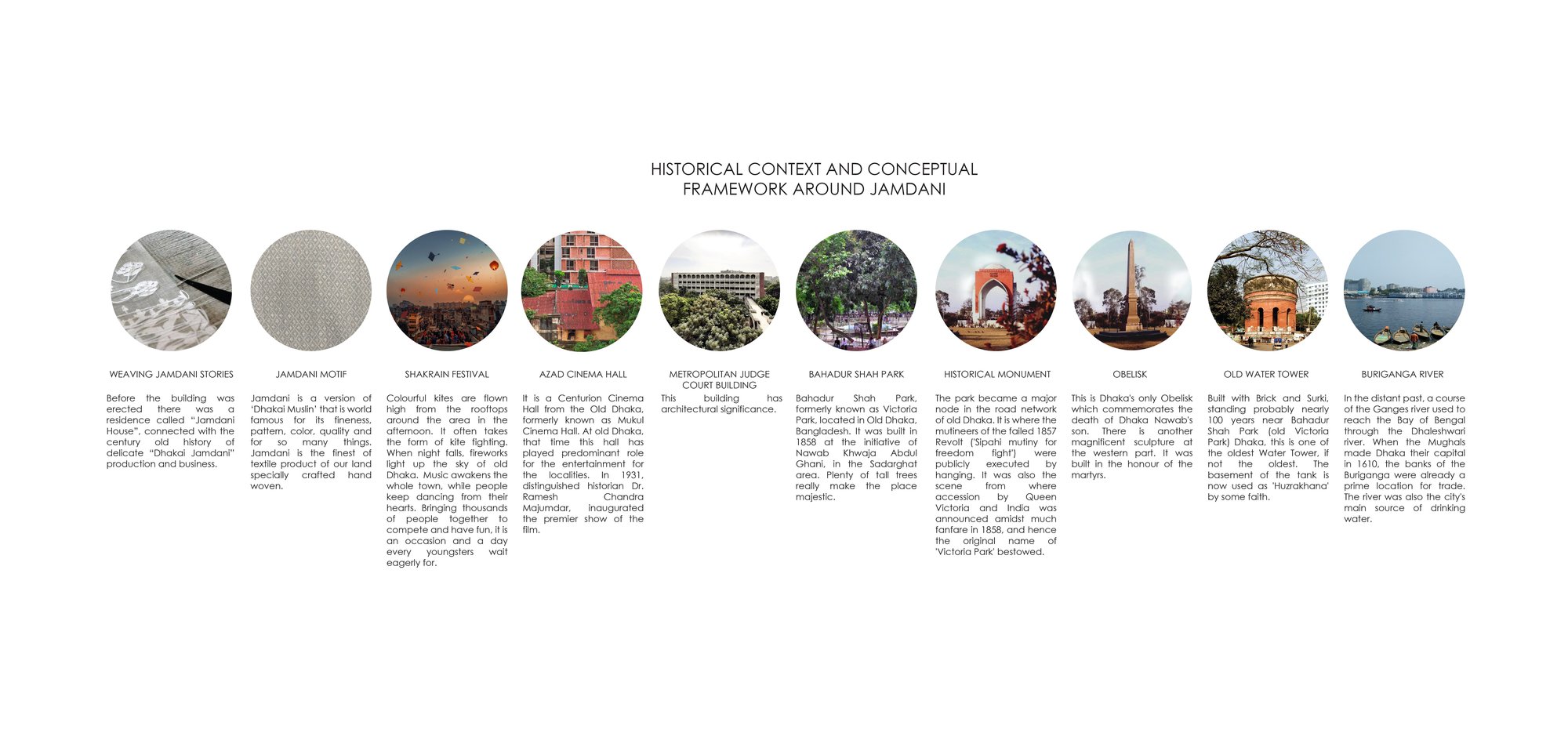
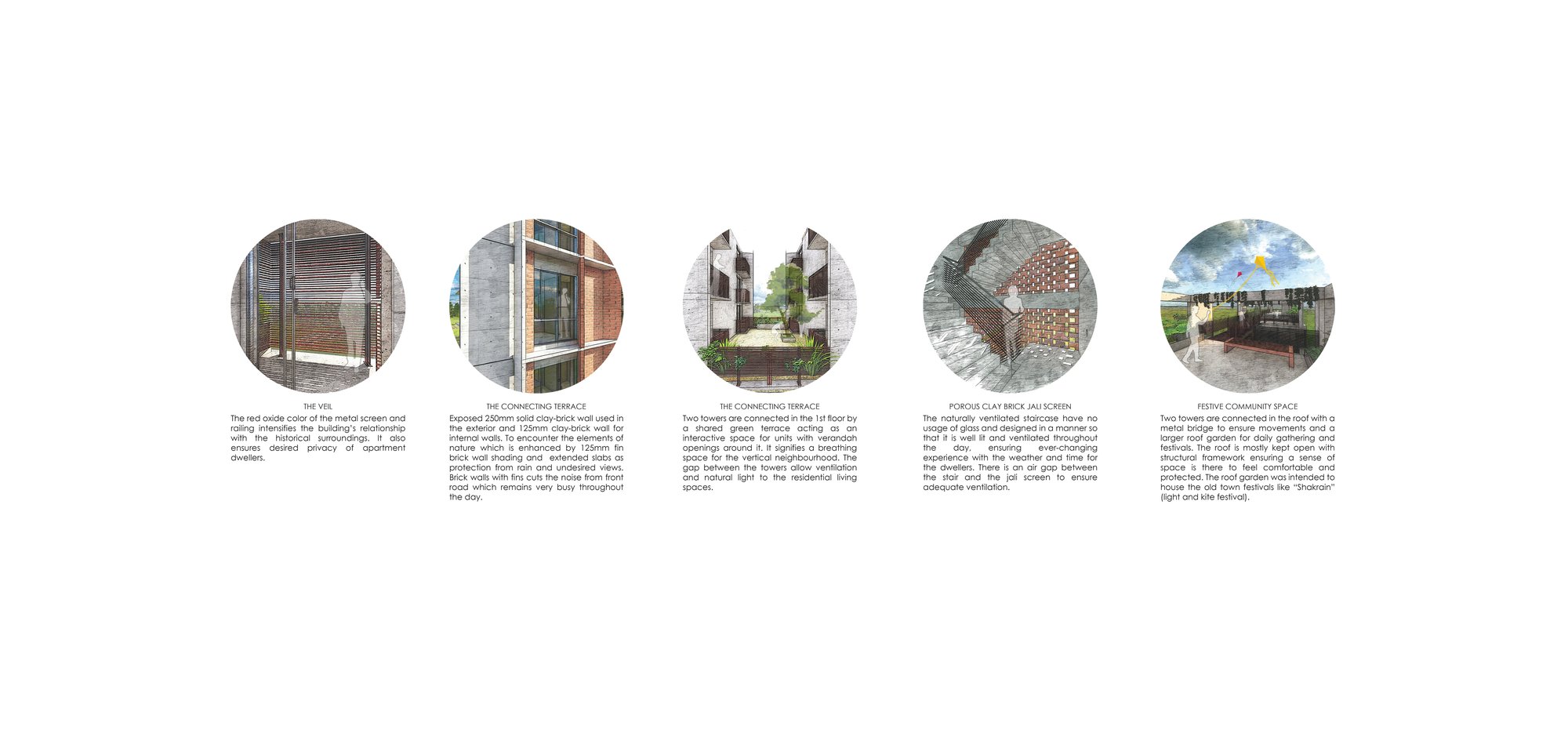
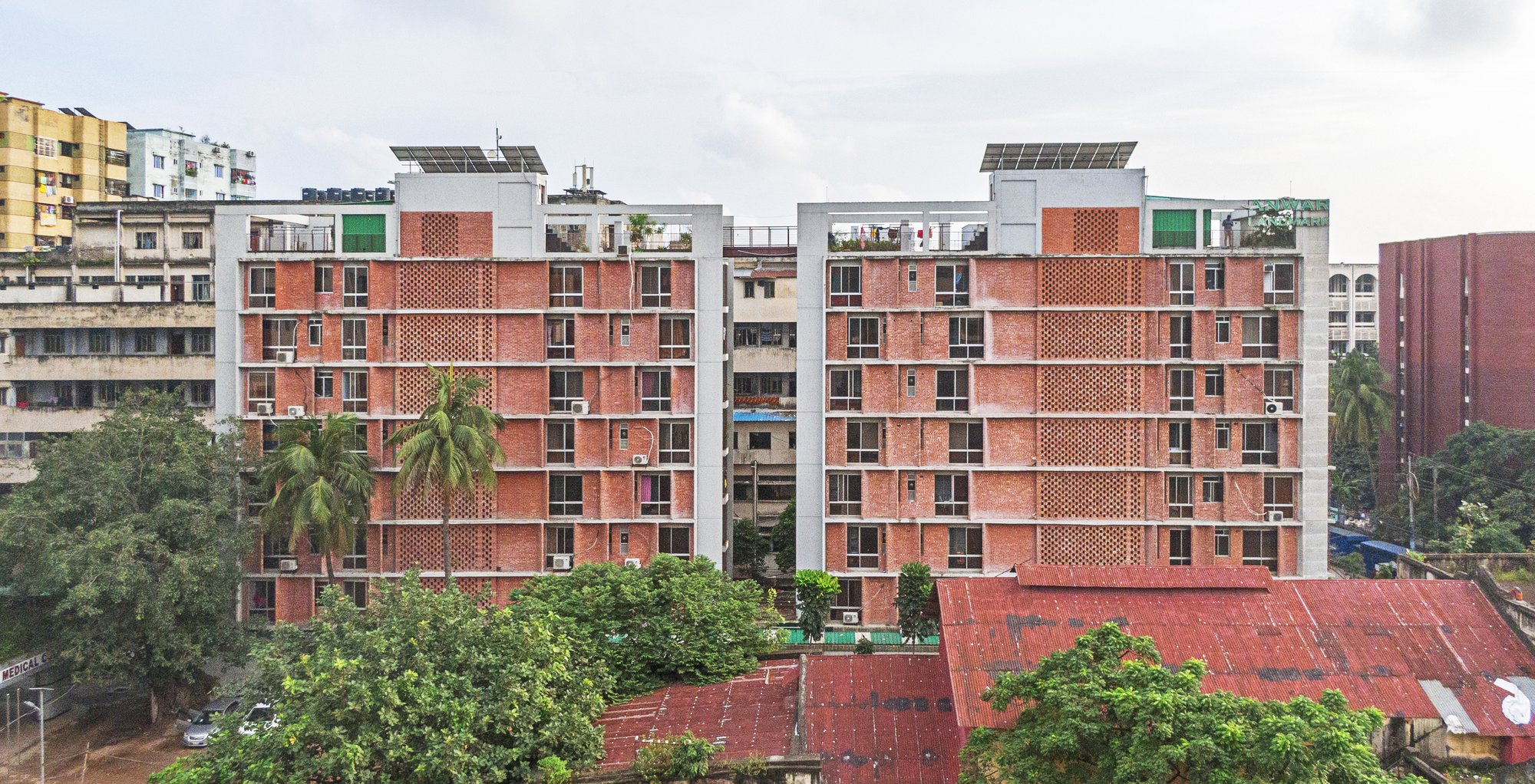
The clay-brick walls with fins and brick Jali screen are the major feature elements of the project. The shifted brick wall fins, changing of opening locations are neutralized by RCC concrete wing walls at the terminal points of each tower, ensuring a bold framework of the building, to hold the seemingly loose elements of the building with a very strong presence of stable edges. Moreover, to support the idea of sustainability and affordability, Mechanical stack parking have been introduced in the project, reducing a major cost factor related to basement.
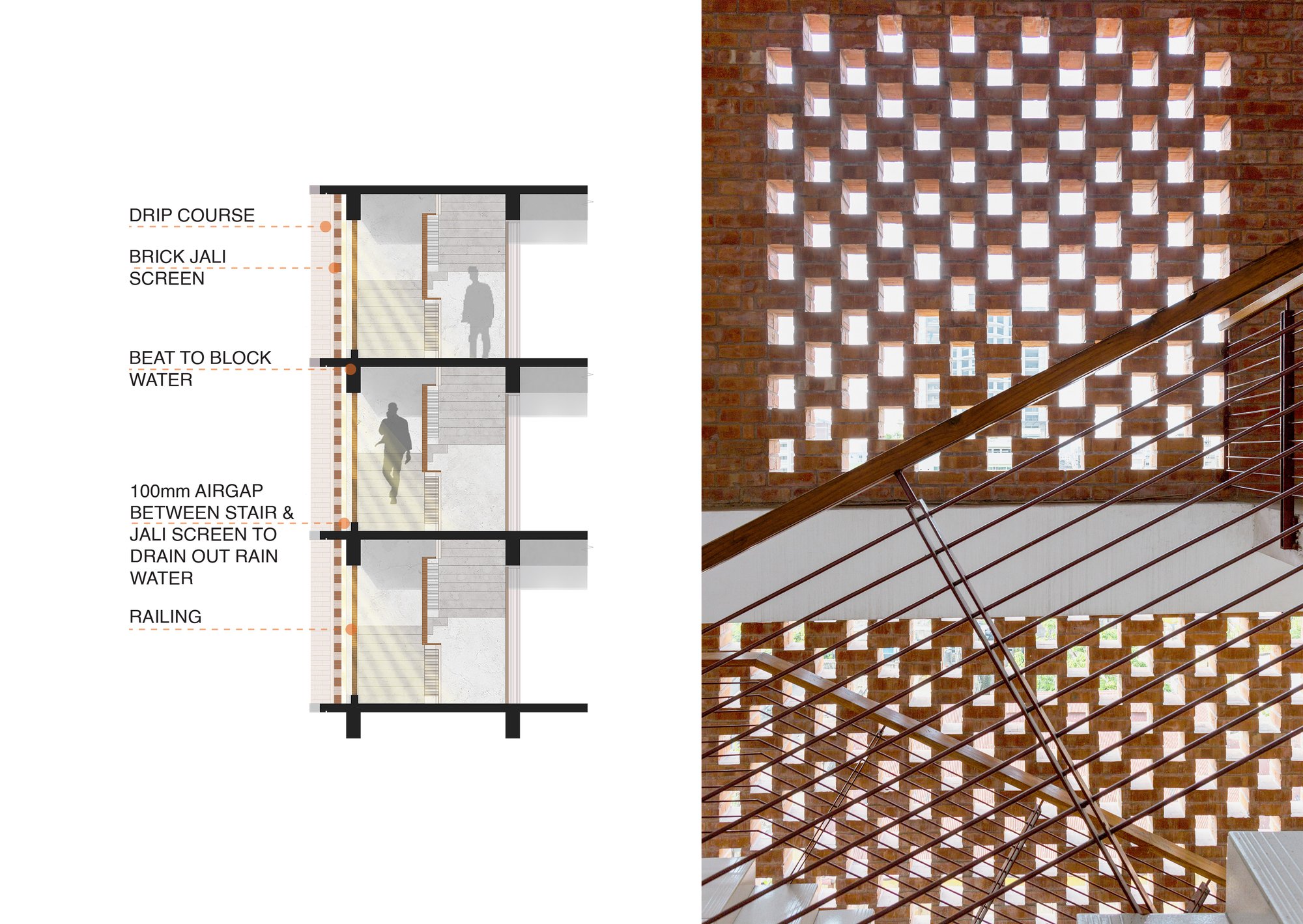
The naturally ventilated staircase have no usage of glass and designed in a manner so that it is well lit and ventilated throughout the day, ensuring to swing the mood of the interior space with changes of weather. The clay-brick Jali screen signals the presence of staircase in each block resulting in translucent woven membrane the night and day respectively from exterior and interior. There is an air gap between the stair and the jali screen to ensure adequate ventilation. The rainwater that dripped along with the interior surface of Jali screen can go out without entering the stair area. Respecting the texture and pallete of the neighborhood, the red oxide color of the metal screen and railing intensifies the building’s relationship with the historical surroundings, acting as a veil maintaining privacy and ensuring safety.
